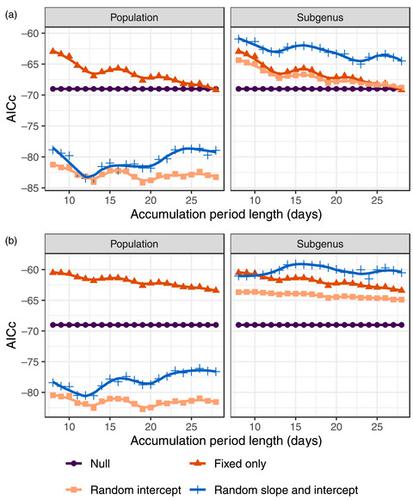Our official English website, www.x-mol.net, welcomes your feedback! (Note: you will need to create a separate account there.)
Pollen-chemistry variations along elevation gradients and their implications for a proxy for UV-B radiation in the plant-fossil record
Journal of Ecology ( IF 5.5 ) Pub Date : 2021-06-07 , DOI: 10.1111/1365-2745.13720 Alistair W. R. Seddon 1, 2 , Daniela Festi 3 , Mayke Nieuwkerk 1 , Ragnhild Gya 1, 2 , Børge Hamre 4 , Linn Cecilie Krüger 1 , Silje A. H. Östman 1 , T. Matthew Robson 5
中文翻译:

沿海拔梯度的花粉化学变化及其对植物化石记录中 UV-B 辐射代理的影响
更新日期:2021-08-10
Journal of Ecology ( IF 5.5 ) Pub Date : 2021-06-07 , DOI: 10.1111/1365-2745.13720 Alistair W. R. Seddon 1, 2 , Daniela Festi 3 , Mayke Nieuwkerk 1 , Ragnhild Gya 1, 2 , Børge Hamre 4 , Linn Cecilie Krüger 1 , Silje A. H. Östman 1 , T. Matthew Robson 5
Affiliation

|
- Research indicates that phenolic compounds (e.g. para-coumaric acid) found within pollen grains may be useful as a proxy to reconstruct the UV-B radiation received at the Earth's surface in the geological past. However, application of this method to the plant-fossil record currently relies on a series of untested assumptions surrounding the ecological factors driving the response of pollen grains in the contemporary environment.
- Here, we investigate the relationship of Pinus spp. pollen to UV-B radiation using individuals of five populations sampled from three elevation gradients across Europe. We develop a novel radiation-modelling approach, which allows us to estimate the UV-B radiation dose of individual trees, weighted by different UV-B action spectra. We then use linear mixed-effects modelling to investigate: (a) whether the variations in UV-B-absorbing compounds in Pinus pollen are best described by models using coarser (subgenus) or finer (population) taxonomic levels; and (b) the duration of the period of accumulation of UV-B-absorbing compounds in pollen, ranging from 8 to 28 days.
- Our results demonstrate an overall positive relationship between para-coumaric acid and UV-B radiation, best described by applying a UV-B-accumulation period spanning 12–19 days. However, we also show clear evidence for population-level factors influencing this relationship across the study locations.
- Synthesis. Our multidisciplinary approach, which combines expertise from palaeoecology, plant physiology and atmospheric physics, provides clear evidence that pollen-grain chemistry is subject to population-level variations. We suggest that quantitative reconstructions of long-term changes in springtime UV-B radiation are still achievable using fossil reconstructions, but only with careful consideration of the factors leading to pollen representation in sediments. Future improvements are dependent on mechanistic understanding of the local factors which mediate the UV-B response across different populations, and on upscaling knowledge at the plant level to incorporate longer-term chemical variations represented within sediment samples.
中文翻译:

沿海拔梯度的花粉化学变化及其对植物化石记录中 UV-B 辐射代理的影响
- 研究表明,在花粉粒中发现的酚类化合物(例如对香豆酸)可用作重建地质过去地球表面接收到的 UV-B 辐射的替代物。然而,将这种方法应用于植物化石记录目前依赖于一系列未经检验的假设,这些假设围绕着驱动当代环境中花粉粒响应的生态因素。
- 在这里,我们调查了松属植物的关系。使用从欧洲三个海拔梯度采样的五个种群的个体将花粉转化为 UV-B 辐射。我们开发了一种新的辐射建模方法,它使我们能够估计单个树木的 UV-B 辐射剂量,由不同的 UV-B 作用光谱加权。然后我们使用线性混合效应模型来研究:(a)松树花粉中吸收 UV-B 化合物的变化是否最好通过使用较粗(亚属)或较细(种群)分类水平的模型来描述;(b) 吸收紫外线的化合物在花粉中累积的持续时间,范围为 8 至 28 天。
- 我们的结果证明了对香豆酸和 UV-B 辐射之间的总体正相关关系,最好通过应用跨越 12-19 天的 UV-B 累积期来描述。然而,我们也显示了影响整个研究地点这种关系的人口水平因素的明确证据。
- 合成。我们的多学科方法结合了古生态学、植物生理学和大气物理学的专业知识,提供了明确的证据,表明花粉-谷物化学受种群水平变化的影响。我们建议使用化石重建仍然可以实现春季 UV-B 辐射长期变化的定量重建,但必须仔细考虑导致沉积物中花粉表现的因素。未来的改进取决于对调节不同种群 UV-B 响应的局部因素的机械理解,以及在植物水平上升级知识以纳入沉积物样品中代表的长期化学变化。



























 京公网安备 11010802027423号
京公网安备 11010802027423号